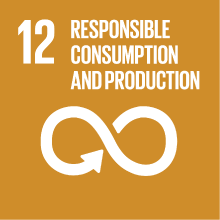COLLOIDS AND INTERFACES - MOD.2
- Academic year
- 2020/2021 Syllabus of previous years
- Official course title
- COLLOIDS AND INTERFACES - MOD.2
- Course code
- CM1375 (AF:307136 AR:169908)
- Teaching language
- English
- Modality
- On campus classes
- ECTS credits
- 6 out of 12 of COLLOIDS AND INTERFACES
- Degree level
- Master's Degree Programme (DM270)
- Academic Discipline
- CHIM/06
- Period
- 1st Semester
- Course year
- 2
- Moodle
- Go to Moodle page
Contribution of the course to the overall degree programme goals
STRUCTURE AND CONTENT OF THE COURSE COULD CHANGE AS A CONSEQUENCE OF COVID-19.
Expected learning outcomes
1. Knowledge and understanding
i) know the different types of weak attractive interactions that influence aggregation in solution, ii) know the methods of preparation of the various nanometric systems in solution and related methods of characterization, iii) demonstrate a discrete practical manual ability and a necessary operational safety
2. Ability to apply knowledge and understanding
i) know how to put into relation the different laboratory experiments and the corresponding results, observing possible points of contact, similarities and specificities, ii) learn the instrumental techniques of investigation used during the laboratory.
3. Ability to judge
i) know how to choose the appropriate technique for the characterization of colloidal systems, ii) know how to propose suitable experiments for the preparation of nanoparticles and aggregating supramolecular systems and their characterization.
4. Communicative skills
Know how to communicate constructively with the teacher and with the lab mates during the experiments, always maintaining a high level of attention and chemical understanding on the experimental work that is being followed, using the correct terminology and nomenclature, in a way that is as synthetic as possible, with sufficient expositive security.
5. Learning skills
Know how to integrate the didactic material provided by the teacher with clear notes, to record the experimental results and the macroscopic and chromatic variations observed in the course of the experiments and to relate them to the information acquired during the theoretical part of the course and the introductory lessons of the laboratory. To be able to draw up a group's lab reports of a few pages that present in a clear, succinct and exhaustive way the objective of the experience, the experimental data and the related discussion of the results
Pre-requirements
Contents
Before the start of the laboratory activity students are required to follow a series of classroom lessons related to the following contents:
Lesson 1: Brief introduction to nuclear magnetic resonance spectrometry (NMR), theory and application for spectral interpretation, assignment of signals and study of the interaction between molecules by monitoring the value of chemical shift with concentration and two-dimensional diffusion spectra.
Lesson 2 and 3: Lessons on weak attractive interactions between chemical species, hydrogen bonding, electrostatic interaction, ion-dipole interaction, dipole interaction, van der Waals interactions, ion-aryl interaction, pi-pi interaction, halogen bonding, classic and non-classical hydrophobic effect.
Lesson 4 and 5: Description of the laboratory experiments related to the preparation of metal nanoparticles, the synthesis of organic molecules able to form supramolecular aggregates (micelles and capsules) and recommendations on the proper behavior to be kept in the laboratory.
Laboratory experiences
-Synthesis of silver nanoparticles of controlled nanometric size and spectrophotometric characterization
-Determination of the critical micellar concentration of a surfactant by NMR analysis
-Synthesis of resorcinarene and study of aggregation in solution and interaction with guest molecules
-Synthesis of a molecule able to form liquid crystals and study of the aggregation
Referral texts
John C. Berg
World Scientific, 2nd Ed. 2012, ISBN: 978-981-4299-82-4
Slides of the lessons available on the Moodle platform
Assessment methods
During the oral exam , the student will be asked to present and discuss a scientific publication with the aid of a presentation reporting the scientific results of colloidal nanometric systems and/or self-aggregating materials. This presentation will then be the starting point for the questions that will be addressed to the student in order to ascertain the level of understanding of the topic. The questions will have both a descriptive character to which the student will have to answer proving to know the topics of the course, and others whose function is to ascertain that the student has deeply understood the logic behind the experimental techniques, the fields of application, the limits and complementarities between experiments (see expected learning outcomes). At the end of the interview the final marks will be decided by together by Prof. Scarso and Benedetti.
Type of exam
Teaching methods
At the beginning of the first day of laboratory will be reminded to the students i) some rules concerning the behavior to be kept in the lab and ii) the importance of the use of personal protective equipment and the proper handling of chemicals.
In order to stimulate the attention of the students, the teacher periodically will organize before the end of the lesson some short (5-10 min) tests that students will follow directly anonymously on their electronic devices (smartphone, tablet, etc.) exploiting the potential of the Socrative platform (https://www.socrative.com/ ). In this way the teacher will be able to view the learning outcomes at the end of the lesson in order to be able to start the next lesson taking up some concepts that may be less easily absorbed by the students.
On the University's "moodle" platform there are pdf files related to slides of the presentations projected during the lessons. From the Socrative platform, students will still be able to keep track of their tests (not relevant for the final exam and anonymous) and will be encouraged to interact with the teacher in order to ensure their maximum understanding of the course.
Further information
Accessibility, Disability and Inclusion
Accommodation and support services for students with disabilities and students with specific learning impairments:
Ca’ Foscari abides by Italian Law (Law 17/1999; Law 170/2010) regarding support
services and accommodation available to students with disabilities. This includes students with mobility, visual, hearing and other disabilities (Law 17/1999), and specific learning impairments (Law 170/2010). In the case of disability or impairment that requires accommodations (i.e., alternate testing, readers, note takers or interpreters) please contact the Disability and Accessibility Offices in Student Services: disabilita@unive.it
2030 Agenda for Sustainable Development Goals
This subject deals with topics related to the macro-area "Circular economy, innovation, work" and contributes to the achievement of one or more goals of U. N. Agenda for Sustainable Development


